AAJ Conference Track Focuses on Professional Negligence

Home of AAJ 2018 Annual Convention
The American Association for Justice (AAJ) Annual Convention that recently took place July 7-10, 2018 in Denver, Colorado, was an eye-opening experience. I was asked to speak on Avoiding Ethical Missteps in Promoting Your Firm, as part of a Professional Negligence Section CLE Program track. Besides a multitude of CLE programs on themes that ranged from trampoline injuries to the hugely popular (standing room only) sexual assault litigation group programs in what is now the #MeToo era, I found that a walk through the Expo Hall offered dozens of vendors providing products and services geared toward marketing, business development, and simply getting leads…and converting them. Some were quite entrepreneurial and unique; some made me a bit queasy (regardless of whether I was wearing my marketing attorney hat or ethics attorney hat, or both). There are seemingly hundreds of companies with the “best” web development, SEO and PPC strategies. And, yet, there were products that got me to stop, watch a demo, and grab a business card.
The track in which I participated as a faculty member, Professional Negligence, offered an excellent day of subjects and attorney speakers, including: Finding Damages Through Every Witness Defense and Plaintiff, J. Jude Basile; my Avoiding Ethical Missteps in Promoting Your Firm session; Cross-Examination of Defendants in Medical Negligence Cases, Paul A. Casi; Captivating the Jury, William P. Lightfoot; Leveling the Playing Field: A Jury Selection System that Roots Out Bias, Keith R. Mitnik; Practical Application of Electronic Medical Records for Trial, James Puga and Don Hanson; The Affordable Care Act: Are Future Damages a Thing of the Past?, Emily G. Thomas; Topics in Calculating Economic Damages for Personal Injury and Wrongful Death, Gene A. Trevino; Direct Examination or “The Heart of the Trial”: Direct Examination From A to Z, Thomas J. Vesper; and Avoiding Legal Malpractice, David L. Wikstrom.
 Marketing Attorney Blog
Marketing Attorney Blog


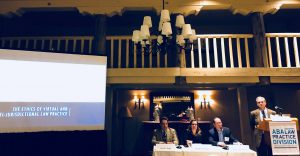 Recently, I had the privilege of serving on a panel at the American Bar Association’s Law Practice Division continuing legal education program on the ethics of virtual and multi-jurisdictional lawyering in Santa Fe, New Mexico. The program was co-sponsored by the State Bar of New Mexico, and took place on May 18, 2018 at the Inn and Spa at Loretto.
Recently, I had the privilege of serving on a panel at the American Bar Association’s Law Practice Division continuing legal education program on the ethics of virtual and multi-jurisdictional lawyering in Santa Fe, New Mexico. The program was co-sponsored by the State Bar of New Mexico, and took place on May 18, 2018 at the Inn and Spa at Loretto.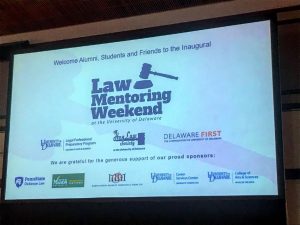
 In the March 2018 issue of the American Bar Association’s
In the March 2018 issue of the American Bar Association’s 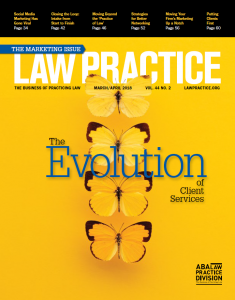 Oh, remember the ‘80s? Alf, Madonna, Pee-Wee’s Playhouse, Garbage Pail Kids? I was in New Orleans to see Keith Smart’s last-second shot for Bobby Knight’s Indiana Hoosier over Syracuse in the NCAA Championship Game in 1987. I watched the Baltimore Orioles defeat the Philadelphia Phillies in the 1983 World Series (when the O’s still were more important to me than the Phillies). And I was at the Stanley Cup Finals between the Flyers and the Edmonton Oilers in 1985 and 1987. Those were just some of the games I attended in person. I worked in the Major Indoor Soccer League and the NHL during the 80s—attending hundreds of games. I remember the end of high school, my college years, first jobs, and the start of law school. Little did I (we) know at the time that those babies being born were—Millennials! And that—in the here and now—it would all be about them.
Oh, remember the ‘80s? Alf, Madonna, Pee-Wee’s Playhouse, Garbage Pail Kids? I was in New Orleans to see Keith Smart’s last-second shot for Bobby Knight’s Indiana Hoosier over Syracuse in the NCAA Championship Game in 1987. I watched the Baltimore Orioles defeat the Philadelphia Phillies in the 1983 World Series (when the O’s still were more important to me than the Phillies). And I was at the Stanley Cup Finals between the Flyers and the Edmonton Oilers in 1985 and 1987. Those were just some of the games I attended in person. I worked in the Major Indoor Soccer League and the NHL during the 80s—attending hundreds of games. I remember the end of high school, my college years, first jobs, and the start of law school. Little did I (we) know at the time that those babies being born were—Millennials! And that—in the here and now—it would all be about them.
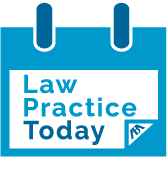 In a world where every law firm is (or says) they are “full-service,” comes this issue of
In a world where every law firm is (or says) they are “full-service,” comes this issue of 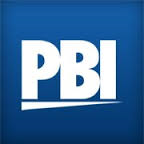
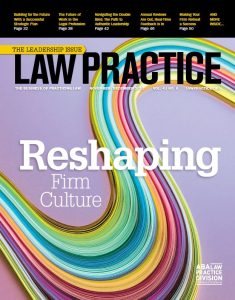 When I wrote my marketing column for the November/December 2017 issue of the ABA’s Law Practice Magazine,
When I wrote my marketing column for the November/December 2017 issue of the ABA’s Law Practice Magazine, 